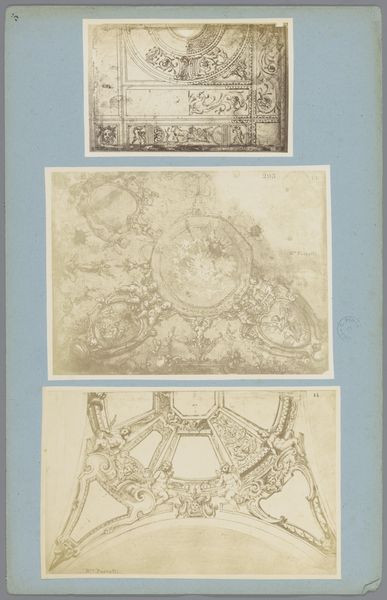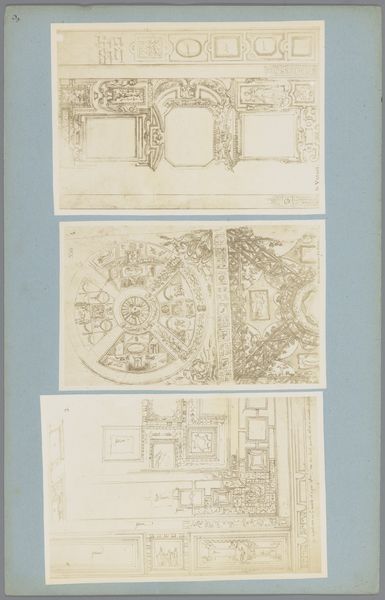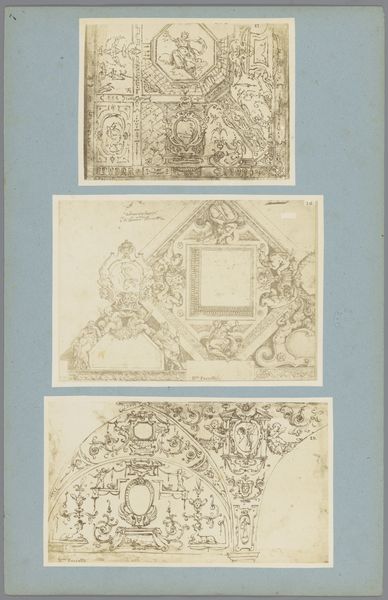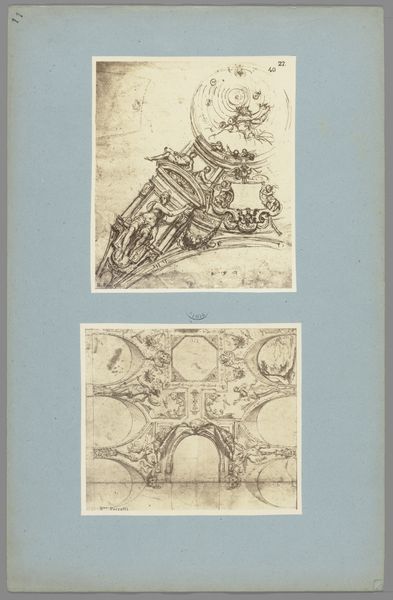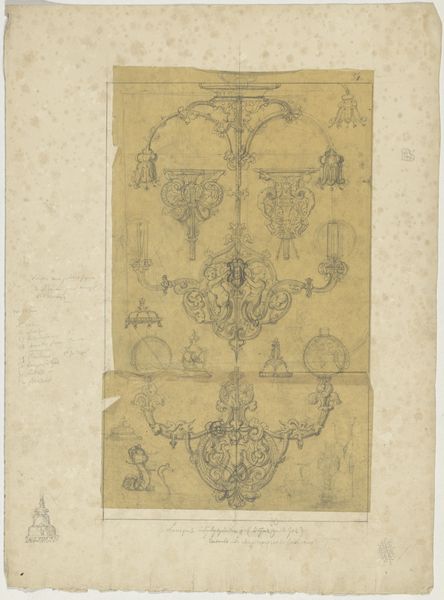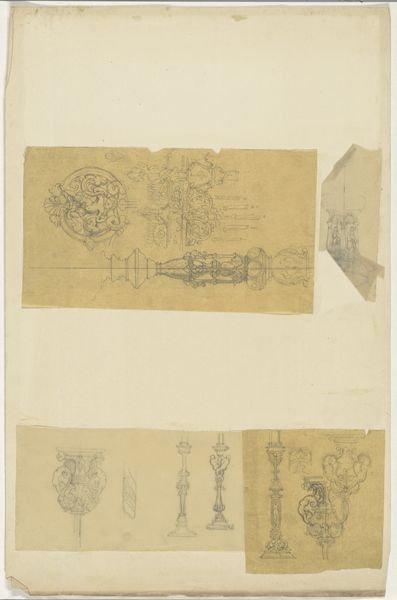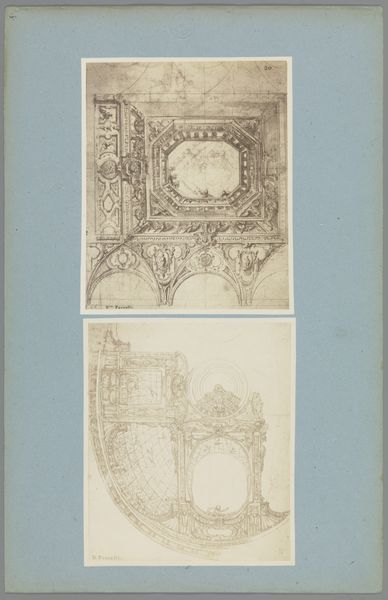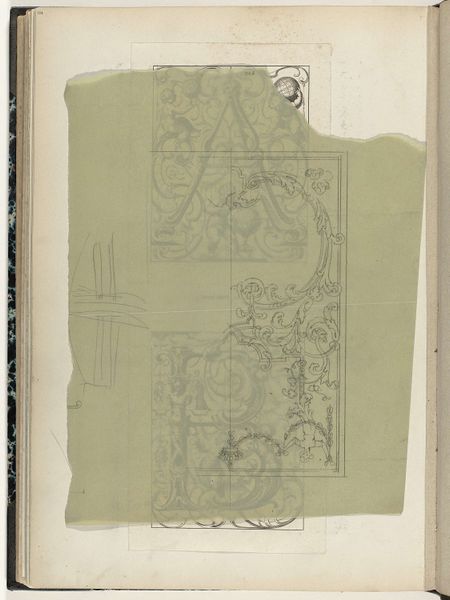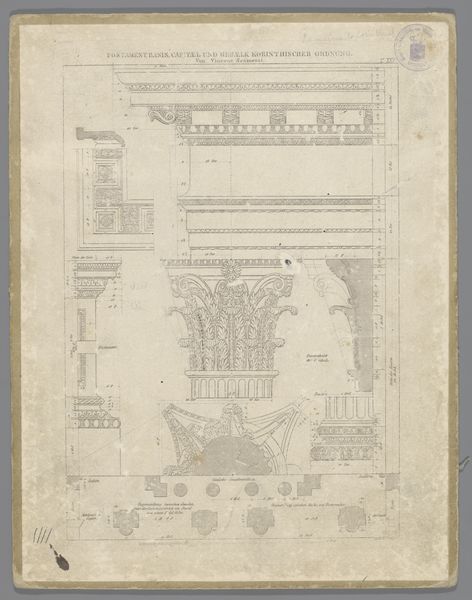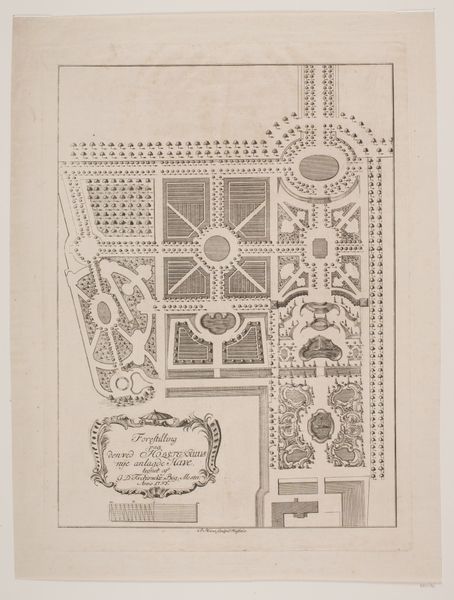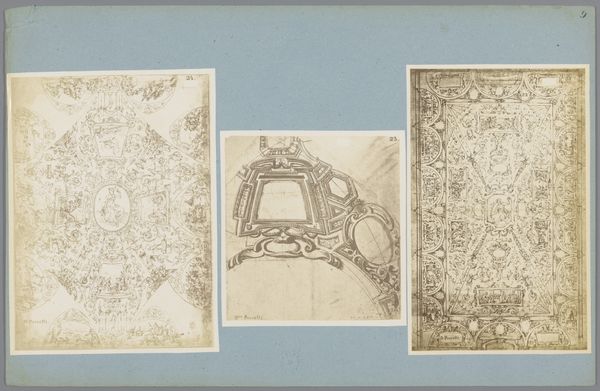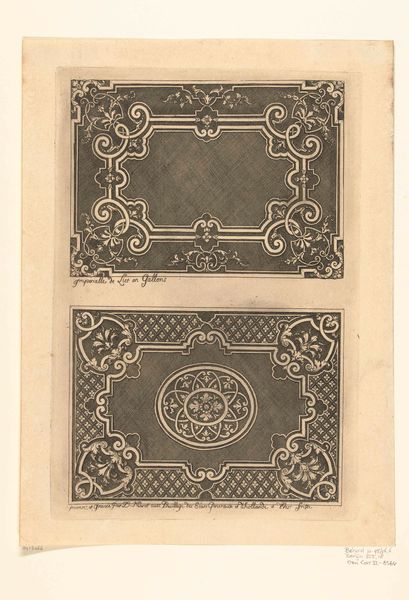
Twee fotoreproducties van tekeningen van plafonddecoraties door Bernardino Poccetti c. 1875 - 1900
0:00
0:00
drawing, print, etching, paper
#
drawing
# print
#
etching
#
paper
#
11_renaissance
#
history-painting
#
academic-art
#
italian-renaissance
Dimensions: height 497 mm, width 320 mm
Copyright: Rijks Museum: Open Domain
Curator: Let's discuss these two photographic reproductions of ceiling decoration drawings attributed to Bernardino Poccetti, dating roughly from 1875 to 1900, rendered as prints and etchings on paper. What’s your initial read on them? Editor: Intricate! Both evoke a sense of soaring architectural ambition. The detailing is incredible, particularly in the lower reproduction, almost overwhelming. You can easily imagine lying beneath those ceilings for hours lost in contemplation. Curator: Exactly! And it’s crucial to remember that we’re viewing reproductions. Consider the sociopolitical context – these prints likely circulated among architects, artisans, and wealthy patrons. They weren't passive aesthetic objects but actively shaped taste and propagated Renaissance artistic ideals through academic art. Who had access? How did this access further certain power structures? Editor: That's an insightful perspective. It reminds me of how the dissemination of such designs perpetuated specific class and gender roles within artistic production and consumption. Were women included among the target audience, the patrons, or artisans engaging with these images? How might these designs have reinforced existing social hierarchies, shaping domestic space according to prevailing cultural norms? Curator: Precisely! The Italian Renaissance revival itself is worth dissecting. Why this particular historical moment, and what societal anxieties or aspirations did it reflect during the late 19th century? How was Italian identity and cultural capital being strategically positioned in the era of nationalism and imperialism? Editor: A telling point, well articulated. I look at the images now, thinking about access and privilege, and wonder whose gazes truly mattered when these reproductions entered circulation. The designs become laden with implications about the reinforcement, rather than the subversion, of historical biases. Curator: Considering that layers of reception, this calls into question whose narratives and lived realities have been historically suppressed by, in this case, the institutional canonization and commercialization of these patterns? Editor: Reflecting on that, these reproductions do more than depict ornate ceilings; they offer a potent reflection of enduring questions about art, access, and societal power structures. Curator: Precisely, art becomes a tool. A window, a mirror, and sometimes, a barricade. Editor: I see them differently now, indeed! It is more of the barricade perspective.
Comments
No comments
Be the first to comment and join the conversation on the ultimate creative platform.
